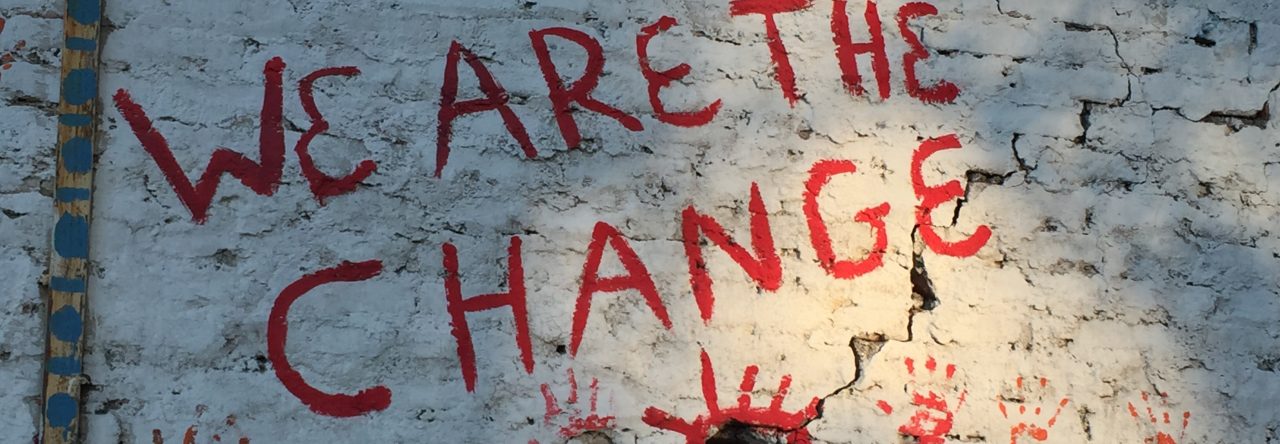Each February, my kids’ schools have special programming for National African American Parent Involvement Day. The activities are different every year, but in 2008 there was a parent-led component that involved reading the class a book and facilitating a classroom discussion about diversity. I signed up to be the parent volunteer in Simon’s kindergarten and Sevrin’s second grade class. I had a great picture book (by no less than Kermit the Frog!) about children’s rights that I had picked up at the UN bookstore years before; my kids liked it, so their classmates probably would. Easy peasy, right? But that’s where, brakes squealing, I slammed head-on into a solid brick wall.
I just had no idea how to facilitate the discussion or talk about human rights in a way that was simple enough for them to understand. Fortunately, I got some help from people who are smarter than me about things like this – teachers. You could never in a million years get a lawyer to summarize an argument in just three words, but teachers can and do. Thanks to my sons’ classroom teachers and Kathy Seipp from our Education Program, the theme for my parent-led discussion was “Same and Different”.
In February 2008, I had just returned from Liberia, a West African country emerging from more than a decade of violent conflict. I picked a few photos of people and scenes from Liberia and had them blown up and mounted on foam core. The plan was that I would hold up a photo and have the kids point out what they saw in the picture that was the same in their lives and what was different.
It was really and truly amazing to hear what the kids had to say. But before I tell you, take a look at the picture and think about what you see that is the same and different from your own life:
 |
| photo by Dulce Foster |
Here are some of the things the kids said: “I like that bracelet.” “I sometimes wear my hair in braids, too.” “They have dark skin and I have white skin.” “We have different trees here, like conifers.” “We have snow here right now.” “Is that corn growing behind them? Because I LOVE to eat corn, too.” “Is that a house? It’s not like my house.” “You couldn’t live in that house in Minnesota. You would get too cold.”
Here is another one:
 |
| photo by Dulce Foster |
“I think they are brothers and sisters who love each other.” “I think they are cousins. I love my cousins, too.” “It must be very hot there. We can only wear clothes like that in summer.” “Do they have seasons?” “Hey! I have flip flops just like that!”
One more time:
 |
| street scene in Monrovia, 2008 |
“How do they carry those big things on their heads? We can’t do that!” “There is a lot of trash on the street.” “We have that same blue cooler. We take it with us when we go camping.” “We have windows, too, but there is no glass in their windows.” “They have electric wires like we do.” “That’s so funny that they are using the wheelbarrows to carry things. We only use our wheelbarrow in the garden.”
Each picture offered many more opportunities to talk about “same and different” than I had imagined. For example, “I have flip flops just like that” (same) but those may be the only pair of shoes the kid owns (different). The “no glass in the windows” comment led to a discussion of mosquitos (same) and malaria (different). They do have power lines like us, but there is no electricity running through them. At the time, only a tiny area of Monrovia had electric power; the rest of the country relied on generator power – at best. I told them about seeing the the dozens of kids huddled around the bases of the 5 or 6 working streetlights in Monrovia, doing their homework. “Just like Abraham Lincoln,” breathed one particularly precocious second grader.
The book I read is called For Every Child, A Better World. It’s a UN Publication/Muppet Press collaboration which is now out of print but you can still find used copies online. If you follow the link For Every Child, A Better World, you’ll see the format: “Every child needs food to eat, but sometimes there isn’t enough to go around.” I’ve done this “Same and Different” presentation several times now in kindergarten, 1st and 2nd grade classrooms. Every time, I walk away surprised by how these very young kids are able to understand and express the concept of basic human rights. If they get it so completely, what is wrong with us adults?
Simon’s kindergarten teacher, however, really took the “Same and Different” theme to the next level. For several weeks, she incorporated “Same and Different” into various classroom activities, including one assignment to draw and write about something that they thought that every child needs. She sent me copies of all of the drawings so I’ll end with a few. Of course, my favorite is the one I posted at the top of this blog entry: “Every child needs peace.”





Awesome. Really good stuff.
LikeLike
Pingback: MINNESOTA, USA: 10 Things To Do With Your Kids On Human Rights Day on Dec. 10th! « World Moms Blog
Pingback: 10 Things To Do With Your Kids on Human Rights Day Dec. 10th! « The Human Rights Warrior
Pingback: MINNESOTA, USA: 10 Things To Do With Your Kids On Human Rights Day on Dec. 10th! ‹ World Moms Blog
Pingback: The Human Rights Lesson | The Human Rights Warrior
Pingback: 10 Things To Do With Your Kids on Human Rights Day! – The Human Rights Warrior | The Press